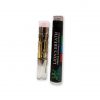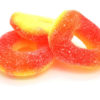
Delta 8 THC is a powerful cannabinoid derived from the cannabis flower, but is found in smaller amounts compared to Delta 9. its psychotropic, well-known cannabinoid relative. The Delta 9 and Delta 8 THC are very similar but the Delta 8 offers a potent high all its own. Consumers of D8 THC report they experienced a nice body sensation and some in the head. Relaxation of the body is a number 1 experience.
Delta-9 THC is the potent THC you think of when people talk about THC and it’s a psychoactive compound that you can find in cannabis. It’s psychoactive once its activated with heat, that’s why when you smoke it you receive the psychoactive effects as well as medicine ones.
Delta-8-THC is similar and binds to the CB1 receptor that is found in the central nervous system. This is where you receive the medicinal help for symptoms stemming from nausea, pain, and anxiety.
The THC Delta 8 is considered psychoactive but is far less potent than THC9 This cannabinoid is showing to possibly be one with great medicinal effects for our future health.
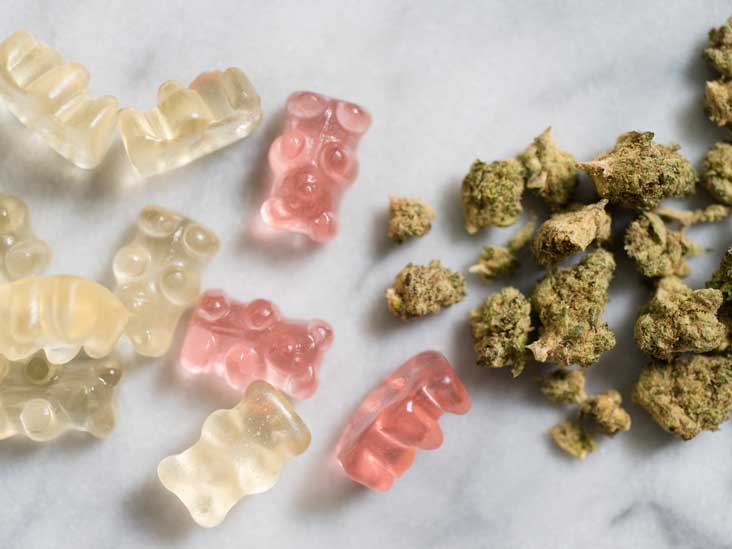
Marijuana — colloquially called weed — refers to the dried flowers, seeds, stems, and leaves of the Cannabis sativa or Cannabis indica plants (1).
It’s a popular drug used by millions of people either for pleasure or to treat chronic health conditions.
Weed can be used in a number of ways, but some of the most popular methods include smoking and vaping.
However, some people wonder whether it’s safe to eat marijuana and whether ingesting it has the same effects as smoking or vaping.
This article explains whether it’s safe to eat weed and the health effects — both positive and negative — related to ingestion.
The short answer is yes, you can eat weed. In fact, marijuana-infused foods and drinks have been consumed throughout history, as far back as 1000 B.C. (2).
Marijuana was used as medicine in ancient China and India and was introduced to Western medicine in the early 19th century. Edible applications, such as tinctures, were prescribed to treat various conditions, from chronic pain to digestive disorders (2, 3, 4).
Edible marijuana products were also used to relieve stress and induce euphoria, similar to alcohol.
Bhang, a beverage made from a mixture of the leaves and flowers of marijuana plants, has been consumed for centuries during religious festivals, such as Holi, a Hindu festival of love and color (3, 5).
In the United States, recreational use of edible marijuana products became popular during the 1960s, and today, many different types of edibles are available, both legally and illegally, depending on state laws.
For example, gummies, candies, chocolates, capsules, teas, and oils are some of the edible marijuana products sold in both legal marijuana dispensaries and through the illegal marijuana market.
Edibles enthusiasts also make their own weed products by infusing butter or oil with marijuana and mixing it into baked goods and other recipes.
Raw marijuana
Though you can eat raw weed, it won’t have the same effect as consuming marijuana-based products, as marijuana has to go through a process known as decarboxylation to become activated (6).
Raw marijuana contains tetrahydrocannabinolic acid (THCA) and cannabidiolic acid (CBDA), compounds that must be exposed to heat, such as in smoking or baking, to turn into the active forms, tetrahydrocannabinol (THC) and cannabidiol (CBD) (6).
Therefore, eating raw weed will not result in the same effects as consuming weed that has been heated, as in edible products like candies, tinctures, and baked goods.
Though you can’t get high from eating raw weed, some health experts believe that eating it may offer some health benefits due to the wide array of plant compounds it contains.
Yet, research in this area is lacking, so the potential therapeutic benefit of raw marijuana is still unclear.
Summary
Weed has been consumed in various forms throughout history for both medicinal and recreational purposes. Though you can eat raw marijuana, it won’t have the same effects as marijuana that has been heated.
Marijuana has many medicinal benefits and has been used to treat various ailments throughout history.
Today, edible marijuana products have a number of uses in the medical field and are becoming a more popular, accepted natural treatment in clinical settings.
May benefit certain health conditions
Edible marijuana products are often used to treat conditions, such as chronic pain, cancer-related symptoms, and anxiety.
Medical cannabis products can legally be prescribed in countries around the world, including Italy, Spain, Germany, and parts of the United States (7).
THC is one of over 100 active compounds — known as cannabinoids — in marijuana.
THC is the compound responsible for the psychoactive properties of marijuana products, including edibles, that may induce feelings of euphoria and relaxation (2).
Other compounds in marijuana, such as CBD, have been shown to have pain- and anxiety-reducing properties.
The powerful combination of therapeutic compounds in this plant makes it a popular natural treatment that effectively reduces symptoms of and eases pain related to various conditions.
For example, edible marijuana products, such as oils, tinctures, pills, and gummies, are prescribed to treat poor appetite, pain, and weight loss in people who have cancer (8).
Additionally, these products may significantly reduce pain and muscle spasms, relieve nausea and vomiting, enhance sleep quality, and improve depression and anxiety (9, 10, 11).
In fact, pharmaceutical companies manufacture oral preparations of marijuana-derived treatments, such as Sativex, which is an oral spray prescribed to treat pain and muscle spasticity (12).
Though edible marijuana products are prescribed and used to treat many other ailments, such as digestive and neurological disorders, high-quality research in these areas is lacking.
Therefore, the full therapeutic potential of marijuana is still unknown (13).
Summary
Edible marijuana is used to treat symptoms related to various medical conditions, such as cancer and chronic pain. However, high-quality studies are lacking, so the full effects of marijuana products on health are still unclear.
Though edible marijuana products may benefit many conditions, some potential adverse effects may occur.
The main issue with edible marijuana products is that it can be very difficult to determine an appropriate dosage. Concentrations of THC vary widely depending on different factors, such as where the product was made and the quality of the marijuana used.
Additionally, unlike smoking weed, edible marijuana products have a long latency period, meaning it can take a while — sometimes hours — for it to take effect.
When marijuana is smoked, THC reaches the brain and takes effect within a few minutes. The effects peak at around 20–30 minutes after smoking and begin to wear off within 2–3 hours (10).
In contrast, the psychoactive effects of edibles usually take 30–90 minutes to kick in. The high feeling lasts much longer and typically peaks at about 2–4 hours after ingestion (10).
The effects of edibles can last for many hours, depending on how much was ingested, as well as your body weight, metabolism, gender, and other factors.
The combination of the highly variable THC concentration and the long latency period of edible marijuana products makes them very easy to unintentionally overconsume, which can lead to unwanted symptoms, such as paranoia and impaired motor ability.
Additionally, though rare, there have been instances of cannabis-induced psychosis, a condition usually related to overconsumption of edible marijuana products that results in symptoms like paranoid delusions, extreme sedation, hallucinations, and confusion (14).
Other side effects related to edible marijuana products include dry mouth, sleepiness, and changes in visual perception.
Edible marijuana products can also interact with alcohol and certain medications, including blood thinners and antidepressants. Therefore, you should avoid consuming edibles with these products (15).
Another concern is that edible marijuana products often resemble regular candies, cookies, and other baked goods, posing a risk for children, pets, and other adults.
In fact, between 2005 and 2011, marijuana-related calls to U.S. poison control centers increased by 30% per year in states that decriminalized marijuana. Many of these calls were related to accidental ingestion of edible marijuana products (16).
Summary
Edible marijuana products are difficult to dose and take a long time to kick in. They also resemble regular food products, which may lead to accidental ingestion.
Though smoking weed is not often considered harmful, research has shown that inhaling marijuana smoke can negatively impact health, similar to cigarette smoke.
Both cigarette and marijuana smoke contain toxins, such as ammonia, hydrogen cyanide, and polycyclic aromatic hydrocarbons, that may damage your lungs and increase your cancer risk (17).
Currently, some research shows a weak link between smoking weed and certain types of cancer (18).
Yet, scientists emphasize that it’s unclear whether or to what extent smoking marijuana influences cancer risk, as many available studies are of low quality, and confounding variables, such as cigarette smoking, affect study results (19).
Smoking weed has also been associated with lung inflammation, bronchitis, and even impaired brain function (10).
In contrast, edible marijuana products have not been shown to negatively affect lung health or cancer risk.
Therefore, if you’re concerned about the possible health risks associated with smoking weed, you may want to use edible marijuana products as an alternative.
However, because most marijuana research focuses on smoking weed, the long-term health implications of consuming edibles are still unknown.
Nevertheless, ingesting marijuana is likely safer than smoking it.
Summary
Marijuana smoke contains toxins that may negatively affect health. Though edibles are likely safer, the long-term health implications of these products are still unknown due to a lack of research.
Many people enjoy using marijuana products to relax and ease stress, while some take edibles to treat or improve symptoms of a medical condition.
Either way, it’s important to use safe products and choose appropriate dosages to avoid unwanted side effects.
If you’re interested in using edibles to treat a medical condition, your healthcare provider is the best person to consult to learn if medical marijuana is an option.
Depending on where you live, you might be able to get a prescription. In the United States, 33 states allow the use of medical marijuana. It has also been legalized in countries around the world, including Italy and Australia (20, 21).
Some conditions that may warrant a medical marijuana prescription include chronic pain, anxiety, multiple sclerosis, terminal illness, and inflammatory bowel disease.
In contrast, recreational use of marijuana is illegal in many parts of the world, including most parts of the United States. Only 10 states, including California, Maine, Vermont, and Oregon, allow for the use of recreational marijuana products.
However, even though marijuana is legal to use in these states, it remains illegal at a federal level and is considered a Schedule I substance under the Controlled Substances Act (CSA).
According to the U.S. Drug Enforcement Administration (DEA), Schedule I substances are “determined to have a high potential for abuse” and are defined as having “no currently accepted medical use” (22).
Yet, many disagree with this classification, especially those who have seen firsthand that marijuana products offer powerful medicinal and therapeutic benefits for many people.
In fact, scientists have repeatedly questioned marijuana regulation, with some arguing that the current legal status is outdated and “thwarts legitimate research” exploring the potential of marijuana in the medical field (23, 24).
Though both social and political views on marijuana are changing rapidly, for now, citizens must abide by the laws set forth by state and federal governments for the use of both medical and recreational marijuana.
Purchasing safe marijuana products
When using edible marijuana for the first time — whether for medical or recreational reasons — it’s important to do so safely.
Sticking to prescribed dosage and usage recommendations can help reduce your risk of potential negative effects related to overconsumption.
If purchasing edible marijuana products in a state where recreational use is legal, only purchase products from a licensed dispensary that you trust.
Licensed dispensaries are often required to have their products tested for safety and potency in state-accredited laboratories to be approved for sale.
However, testing protocols vary considerably from state to state, and some don’t require laboratory testing (25).
It’s important to note that marijuana bought from illegal operations or dispensaries that sell untested products can be contaminated with pesticides, mold, fungi, bacteria, heavy metals, formaldehyde, and other substances, which can pose serious health risks (26).
Dispensaries typically carry a variety of marijuana products with different concentrations of THC and CBD, which can be confusing for first-time buyers. Consulting dispensary staff is a smart way to find the best product to suit your needs.
Summary
The legality of marijuana varies, so the use of both medical and recreational marijuana products depends on where you live. Only purchase marijuana products from trusted sources and follow dosing recommendations carefully.
Edible marijuana products may offer various benefits, including reducing symptoms of chronic illnesses and anxiety.
Still, these products may cause side effects, react with common medications, and take a long time to kick in.
Depending on where you live, you may be able to use medicinal or recreational products legally. However, it’s important to only purchase from licensed, reputable dispensaries that sell products tested for purity and potency.
/https://www.thestar.com/content/dam/thestar/calgary/2019/08/25/canadian-cannabis-firms-have-developed-a-taste-for-edibles-is-the-public-hungry-too/_1_choklat_bar.jpg)
CALGARY—Entering the legal edibles market in Canada come October will be more complicated than just cooking up some “magic” brownies in your kitchen, but it won’t stop some chocolate makers who say they have the know-how and the equipment to make it happen.
Brad Churchill, owner of Choklat, a Calgary-based chocolate manufacturer, recently led a tour around the cool interior of a 5,000 square foot facility he once used for making conventional chocolate. His branded bars are currently sold in grocery stores across Western Canada.
In just a few months, the space will be a Health Canada-approved site capable of making cannabis-infused bars. The first batches should be available for sale by mid-December.
Retrofitting this facility hasn’t been cheap. Churchill says he is already on the hook for more than a million dollars in cannabis regulation-related upgrades. Then there’s the cost of running universal grinders and other equipment needed to handle chocolate production on an industrial scale. If Choklat had been a fledgling company, Churchill said he couldn’t have afforded to get into the edibles business.
/https://www.thestar.com/content/dam/thestar/calgary/2019/08/25/canadian-cannabis-firms-have-developed-a-taste-for-edibles-is-the-public-hungry-too/churchill_choklat.jpg 850w,https://images.thestar.com/5ZDfq4bUf92nMcU1do6UXpdbI8M=/650x433/smart/filters:cb(1566607265091)/https://www.thestar.com/content/dam/thestar/calgary/2019/08/25/canadian-cannabis-firms-have-developed-a-taste-for-edibles-is-the-public-hungry-too/churchill_choklat.jpg 650w,https://images.thestar.com/bKQL4ro8fgUiMsi-SB2gmLqP2KY=/605x403/smart/filters:cb(1566607265091)/https://www.thestar.com/content/dam/thestar/calgary/2019/08/25/canadian-cannabis-firms-have-developed-a-taste-for-edibles-is-the-public-hungry-too/churchill_choklat.jpg 605w,https://images.thestar.com/1n9WvuE4eOaaIn8CIuO517TbZ4E=/480x320/smart/filters:cb(1566607265091)/https://www.thestar.com/content/dam/thestar/calgary/2019/08/25/canadian-cannabis-firms-have-developed-a-taste-for-edibles-is-the-public-hungry-too/churchill_choklat.jpg 480w,https://images.thestar.com/bByiwkeAOcOqx6MT4IVZx_ZmmXY=/400x267/smart/filters:cb(1566607265091)/https://www.thestar.com/content/dam/thestar/calgary/2019/08/25/canadian-cannabis-firms-have-developed-a-taste-for-edibles-is-the-public-hungry-too/churchill_choklat.jpg 400w,https://images.thestar.com/3Wv2K6ETJav91_ke32G72CVkMvY=/320x213/smart/filters:cb(1566607265091)/https://www.thestar.com/content/dam/thestar/calgary/2019/08/25/canadian-cannabis-firms-have-developed-a-taste-for-edibles-is-the-public-hungry-too/churchill_choklat.jpg 320w)
“Even if you have deep pockets, it’s still a seven-figure number,” he said.
Despite the cost of entry, extremely strict federal regulations and modest edibles sales data from states that have legalized, industry representatives in Canada are excited about the sheer variety of new products that will be available to customers who may have shied away from joints or vaporizers.
Josh Lyon, vice-president of marketing for Toronto-based Tokyo Smoke Brands, said the second wave of legalization that begins on Oct. 17, 2019, will prove to be similar to last year’s excitement and media hype. He said Tokyo Smoke is already fielding plenty of questions from interested potential consumers and intends to offer its own range of products — but wouldn’t disclose what they’ll look like yet.
“It’s going to be a new sense of discovery,” he said. “It’s this whole new legal world of products that people haven’t had access to before.”
These products aren’t just valued for their variety, but also their appeal to curious potential customers who might be turned off by pungent joints or bongs. When it comes to edibles, non-smokers, health-conscious cannabis lovers, or those who have tried weed in the past but quit are all firmly in the crosshairs of Canadian cannabis companies.
“The lion’s share of the market is the consumer that’s never tried it before,” Churchill said.
According to cannabis research market firm BDS Analytics, optimism from Canadian edibles producers may be overstated. Edibles sales in the U.S. states of California, Colorado and Oregon are just a fraction of that of conventional weed purchases — known in the industry as dried flower. Data collected between January and May of 2019 showed about $768 million in conventional weed sales compared to $147 million for gummies and $33 million for cannabis-infused chocolate.
/https://www.thestar.com/content/dam/thestar/calgary/2019/08/25/canadian-cannabis-firms-have-developed-a-taste-for-edibles-is-the-public-hungry-too/edibles_brownies.jpg 850w,https://images.thestar.com/CM3GB9otu0RuG1Hgcb3LXVYRZr8=/650x466/smart/filters:cb(1566607265830)/https://www.thestar.com/content/dam/thestar/calgary/2019/08/25/canadian-cannabis-firms-have-developed-a-taste-for-edibles-is-the-public-hungry-too/edibles_brownies.jpg 650w,https://images.thestar.com/qqhHob2yeCY5g5EMEW2Fj6IwumA=/605x434/smart/filters:cb(1566607265830)/https://www.thestar.com/content/dam/thestar/calgary/2019/08/25/canadian-cannabis-firms-have-developed-a-taste-for-edibles-is-the-public-hungry-too/edibles_brownies.jpg 605w,https://images.thestar.com/M8YI9KlGreEn93qaQTcFqK2-Xto=/480x344/smart/filters:cb(1566607265830)/https://www.thestar.com/content/dam/thestar/calgary/2019/08/25/canadian-cannabis-firms-have-developed-a-taste-for-edibles-is-the-public-hungry-too/edibles_brownies.jpg 480w,https://images.thestar.com/Gm7VewshmNYlQS-inlEdHzuwTfs=/400x287/smart/filters:cb(1566607265830)/https://www.thestar.com/content/dam/thestar/calgary/2019/08/25/canadian-cannabis-firms-have-developed-a-taste-for-edibles-is-the-public-hungry-too/edibles_brownies.jpg 400w,https://images.thestar.com/F54ye-JKJKtYTImmOdR2Es7r9TM=/320x230/smart/filters:cb(1566607265830)/https://www.thestar.com/content/dam/thestar/calgary/2019/08/25/canadian-cannabis-firms-have-developed-a-taste-for-edibles-is-the-public-hungry-too/edibles_brownies.jpg 320w)
This also holds true in Washington State, where recreational cannabis of all types has been sold out of government-sanctioned cannabis stores since July 2014. Unlike Canada, Washington legalized all forms of cannabis at the same time. Brian Smith, spokesperson for the Washington State Liquor and Cannabis Board, said traditional dried flower cannabis remains their most popular option.
“Dried flower is by far the biggest category of sales at retail stores,” he told Star Calgary. “Edibles are somewhere less than 10 per cent.”
However, the firm said gummies in particular remain highly popular among users who prefer to eat their weed, rather than smoke, vape or apply a topical. Part of this is due to their portability and the fact that they don’t melt like cannabis-infused chocolate. But the firm warned that demand for gummies has slowed down in more established cannabis-friendly states like Colorado.
“Will gummies growth slow down within individual states? Most likely,” the firm said in a report posted to their website.
But legal Canadian goodies will be quite different from their American counterparts — and they’ll be far less potent than those on the black-market. Under Canada’s relatively strict edibles regulations, a single package, which may hold several brownies or cookies, can’t contain more than 10 milligrams of THC — a tenth of the limit in Colorado, California and Washington. Critics have warned such strict regulations won’t kill black-market edibles in Canada.
Strict regulations and modest U.S. sales data haven’t stopped prospective Canadian sellers from eying soon-to-be-legal edibles and concentrates.
Troy Dezwart, the executive director and founder of Alberta-based Freedom Cannabis, said they’re focused on building an extract laboratory to get into the market. Its first phase will encompass about 50,000 square feet and it will have about 10 to 15 staff. Once fully online, their main production facility will have around 125 employees.
/https://www.thestar.com/content/dam/thestar/calgary/2019/08/25/canadian-cannabis-firms-have-developed-a-taste-for-edibles-is-the-public-hungry-too/edibles_chocolates.jpg 850w,https://images.thestar.com/b4_t5Tbn-gy1jEVdR9fPCRqPkCY=/650x433/smart/filters:cb(1566607265549)/https://www.thestar.com/content/dam/thestar/calgary/2019/08/25/canadian-cannabis-firms-have-developed-a-taste-for-edibles-is-the-public-hungry-too/edibles_chocolates.jpg 650w,https://images.thestar.com/gmpX6yzQfSpoAz4H4VgZ_BX1ZWA=/605x403/smart/filters:cb(1566607265549)/https://www.thestar.com/content/dam/thestar/calgary/2019/08/25/canadian-cannabis-firms-have-developed-a-taste-for-edibles-is-the-public-hungry-too/edibles_chocolates.jpg 605w,https://images.thestar.com/Uz2g-B0FPv6cAK-kfApTsFhE4P0=/480x320/smart/filters:cb(1566607265549)/https://www.thestar.com/content/dam/thestar/calgary/2019/08/25/canadian-cannabis-firms-have-developed-a-taste-for-edibles-is-the-public-hungry-too/edibles_chocolates.jpg 480w,https://images.thestar.com/ESlitFRH5HMXxoML6JYgChe_OSE=/400x267/smart/filters:cb(1566607265549)/https://www.thestar.com/content/dam/thestar/calgary/2019/08/25/canadian-cannabis-firms-have-developed-a-taste-for-edibles-is-the-public-hungry-too/edibles_chocolates.jpg 400w,https://images.thestar.com/vtEdnDjUZdg8pcVVjZj9vtOhjqA=/320x213/smart/filters:cb(1566607265549)/https://www.thestar.com/content/dam/thestar/calgary/2019/08/25/canadian-cannabis-firms-have-developed-a-taste-for-edibles-is-the-public-hungry-too/edibles_chocolates.jpg 320w)
Dezwart said it was clear to him that, one day, the Canadian government would legalize edibles, topicals, and concentrates — derivatives, in his words — given their high demand elsewhere. He also disputed figures suggesting traditional dried flower remained the most popular form of cannabis, saying the elegance and simplicity of using derivatives make them more attractive.
Loading...
Loading...Loading...Loading...Loading...Loading...
“I’m not sure that dried flower is that much more popular than the derivatives today in those other markets,” he said.
Churchill believes the industrial scale processes he uses for conventional chocolate bars at Choklat will also solve a long-standing problem in the black-market edibles business — consistency.
It isn’t unheard of for part of a homemade batch of infused treats to contain very little cannabis at all, while other parts are far too potent. Baking is a complicated science and Churchill said small-batch recipes for illegal edibles simply won’t translate into the world of large-scale food production.
“Every chef and pastry chef in the world has managed to get his hands on some black-market cannabis somewhere and thinks he’s going to duplicate his process from his 20-quart mixer in his kitchen to an industrial scale,” he said. “It’s not going to happen. Guy doesn’t have a clue.”
Even if edibles don’t pan out, Churchill doesn’t expect to go broke. His backup plan is selling conventional, weed-free Choklat bars in the U.S. through Whole Foods. After all, at the end of the day, Choklat’s 5,000 square foot edibles production facility is — more or less — still a chocolate factory.
“We can fire up this equipment, make chocolate bars, and ship,” he said.
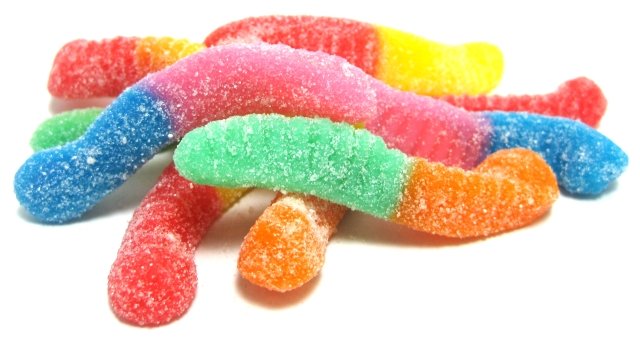
Home / Edibles / Candies and Gummies
Future Weed Sour Gummy Worms are a delicious way to enjoy cannabis! These tasty candies are infused with high quality clear cannabis THC oil. These fruity gummies contain 400mg of THC.
Out of stock
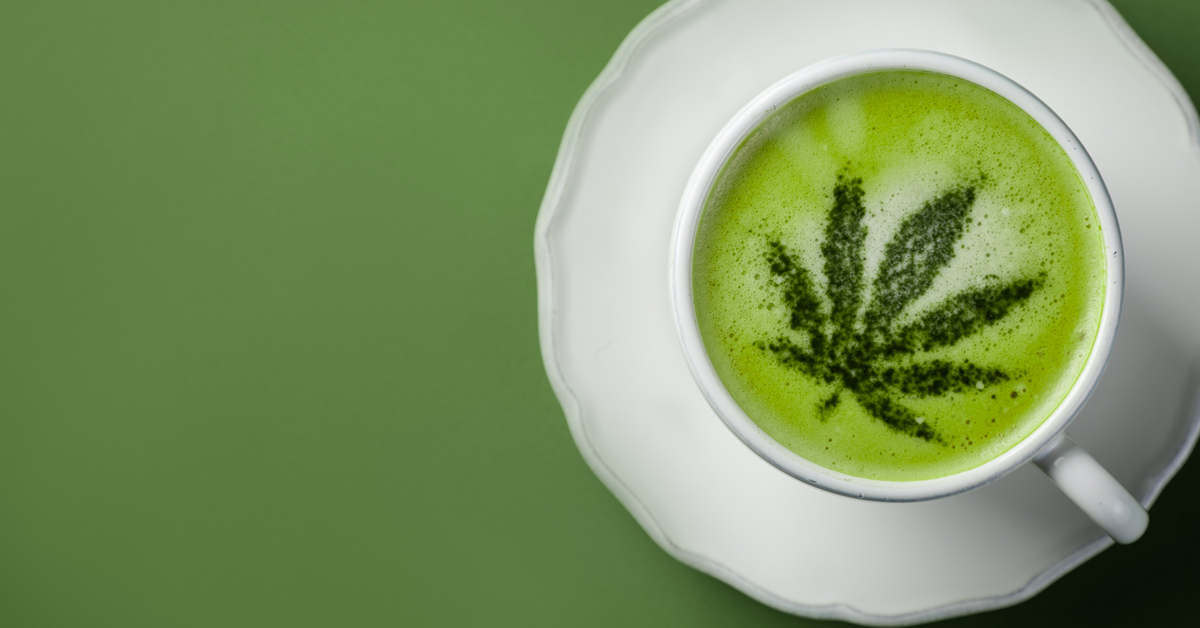
You are welcome to republish this Policy Options article online and in print periodicals. We ask that you follow these guidelines.
Please attribute the author(s) and mention that the article was originally published by Policy Options magazine. Editing the piece is not permitted, but you may publish excerpts.
by Tahira Rehmatullah. Originally published on Policy Options
November 28, 2019
- 90mg THC ea. sucker
- 180mg THC per package
- Available in Pina colada, Strawberry banana, Green apple, Lemon, Root beer, Watermelon & Grape.
Perfect for a slow and sustained nighttime buzz, each KRAV Night Sucker has 90 mg THC that provides a potent and relaxing experience. Infused with refreshing flavours like Watermelon, Pina Colada, Strawberry, Green Apple, Banana, Lemon, Root beer and Grape, this bulk pack includes 15 packs. Each pack comes with two Indica lollipops. The powerful yet mellow high takes a while to settle so go slow initially and make sure to find the right levels.
Source

More than 40% of North American nonmedical cannabis users consume edibles
Edibles are increasingly popular forms of nonmedical cannabis and include baked goods, candies and beverages.1,2 Legal edibles are available in several US states and became commercially available in Canada in late 2019.3
Edibles have a long latency period and duration of action
Compared to inhaled cannabis, edibles have delayed peak effects of about 3 hours, and these effects may last up to 12 hours after ingestion.4 People accustomed to an instantaneous effect from inhaled cannabis may ingest excessive doses of edibles before peak effects have occurred (i.e., “dose stacking”).4
Unfamiliarity with edible dosing and difficulties in dividing edibles can result in unintentional overdose
In Canada, regulated edibles must be sold in individual packaging containing no more than 10 mg of tetrahydrocannabinol (THC),3 although unregulated edibles can contain larger amounts of THC.4 A typical intoxicating dose of edibles contains 10–30 mg of THC.4 The impracticalities of dividing edibles into smaller portions (e.g., one-tenth of a 100-mg THC cookie) is a common reason for overdose.4
Psychiatric and cardiovascular complications are more likely with edibles
A study of 9973 emergency department visits related to cannabis use reported that visits attributed to edible cannabis were less frequent than those for inhaled cannabis (9% v. 91%). However, the reasons for the visits were different, with edible users being more likely to have visits for acute psychiatric conditions (18% v. 10.9%) such as psychosis and anxiety, cardiovascular symptoms (8% v. 3.1%) and intoxication (48% v. 28%).5
Unintentional exposure to edibles is particularly dangerous for children
Ingestion of edibles accounts for three-quarters of all cannabis-related exposures in children.4 Similarities in taste and packaging between unregulated edibles and noncannabis foods and candies is a common reason for unintentional exposure. Regulated edibles in Canada must be sold in child-resistant packaging with a standardized cannabis symbol and dose, and should be stored in locked locations in households with children.3
Acknowledgement
The authors thank Donald A. Redelmeier for helpful comments on earlier versions of this manuscript.
Footnotes
-
CMAJ Podcasts: author interview at https://soundcloud.com/cmajpodcasts/191305-five
-
Competing interests: None declared.
-
This article has been peer reviewed.
-
Disclaimer: Nathan Stall is an associate editor with CMAJ and was not involved in the editorial decision-making for this article.
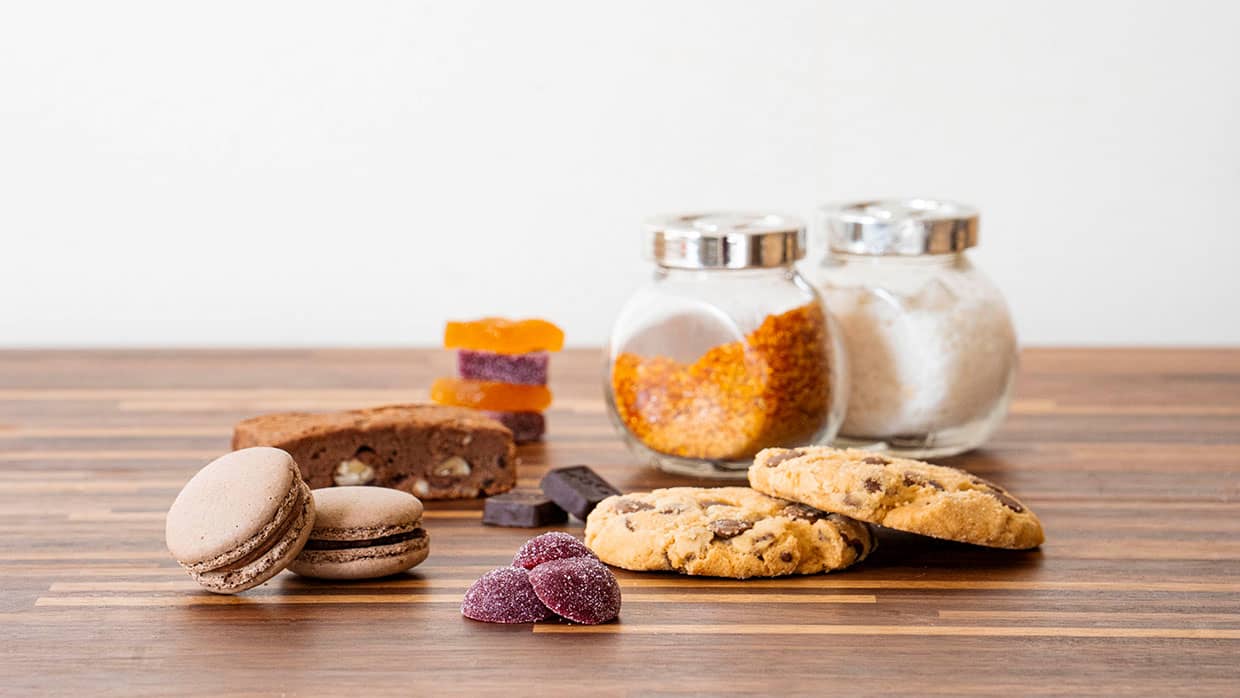
Strongest Edibles in Canada | Most Potent Edibles [2020] | The PotAdvisor = 150) { jQuery("header").addClass("lp-stickyHeader"); jQuery("body").find("section.aliceblue").css("margin-top", wp_nav); }else{ jQuery("header").removeClass("lp-stickyHeader"); jQuery("body").find("section.aliceblue").css("margin-top", '0'); } }); }); ]]> ' );( document.contains ) || document.write( '' + 'ipt>' );( window.DOMRect ) || document.write( '' + 'ipt>' );( window.URL && window.URL.prototype && window.URLSearchParams ) || document.write( '' + 'ipt>' );( window.FormData && window.FormData.prototype.keys ) || document.write( '' + 'ipt>' );( Element.prototype.matches && Element.prototype.closest ) || document.write( '' + 'ipt>' );( 'objectFit' in document.documentElement.style ) || document.write( '' + 'ipt>' ); ]]>
Source
BuyWeedCenter offers medical marijuana for sale and weed for sale that offer tremendous therapeutic value for a wide range of health conditions. These products have been scientifically proven effective on human bodies suffering from intense pain or mental disorders. They can help to cure or alleviate the symptoms of a variety of life-threatening ailments, including epilepsy, cancer, HIV/AIDS, and many more.
According to University of California Davis Medical Center, Body pain is the major reason to prescribe medical marijuana or weed. From headache to chronic joint or muscular pain, marijuana has been found to be highly effective. Cancer specialists around USA and UK recommend medical weed or marijuana to minimize nausea effect after chemotherapy, long-term medical disturbances caused by cancer medication, glaucoma and nerve pain.
Buyweedcenter has high-quality Sativa, Indica, Hybrid Strains and other varieties of medical weed available in the form of oils, cons and rolls. Rather than just delivering the order, our team take a keen interest in providing you with the most suitable substance as per your medical condition. We look at the doctor`s prescription, ask about your medical condition and help you get 100% Real Weed for Sale. Now you don’t have to be worried about where to buy weed online.
The marijuana plant contains more than 100 different chemicals called Cannabinoids. Each one has a different effect on the body. Delta-9-tetrahydrocannabinol (THC) and cannabidiol (CBD) are the main chemicals used in medicine. THC also produces the “high” people feel when they smoke marijuana or eat foods containing it. Keeping up with the ever expanding cannabis industry that has grown to encompass vaping as a routine, we equally currently carry the trending vapes, including Voopoo Drag and Legion Vape, all currently available at Vaping Corp, Exotic Carts and more . Do not hesitate to place your order and buy weed online from us today!

Buy weed online Queensland.There is a lot of confusion around our industry, and here at 274 Weed Delivery we understand that trying to find reputable information online is difficult. So, to combat that, we have a team ready to assist with any questions that you may have. With our strategic partnerships, we can offer you information directly from our cannabis attorneys or you can ask medical questions to our team of doctors. Buy Marijuana In Australia WEED FOR SALE AUSTRALIA Buy THC vapes online Perth weed BUY WEED ONLINE BRISBANE Buy THC vapes online Perth weed

